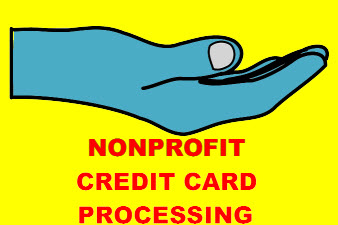Discounted Interchange Fees
Charities, non-profits, and churches have an opportunity to save on credit card processing fees, which can eat directly into the bottom line of the organization's coffers. With fees ranging up to 6% for credit card acceptance, the value of donations from credit cards reduced compared to cash and checks. In the past, when credit card donations were smaller, this was not as big of an issue but more people are switching to plastic.
 Giving kiosks and donation tablets are just a couple of the ways people are finding to make anonymous gifts. For museums, public spaces, and even for special events like camps and workshops, the acceptance of credit cards is one positive way to increase a foundation or government agency's income while reducing dependence on checks or the problems that come with counting and depositing cash. Charities, NGOs, foundations, and even scouting groups can all get better rates on debit and credit card services by taking the time to choose the right merchant services provider. While some financial decisions may need to be made by a governing board, in other cases a single director or 501(c)(3) member will be able to sign on the dotted line.
Giving kiosks and donation tablets are just a couple of the ways people are finding to make anonymous gifts. For museums, public spaces, and even for special events like camps and workshops, the acceptance of credit cards is one positive way to increase a foundation or government agency's income while reducing dependence on checks or the problems that come with counting and depositing cash. Charities, NGOs, foundations, and even scouting groups can all get better rates on debit and credit card services by taking the time to choose the right merchant services provider. While some financial decisions may need to be made by a governing board, in other cases a single director or 501(c)(3) member will be able to sign on the dotted line.
Payment Trend Change
Donation kiosks are one of the factors that has changed the way people make contributions. These standalone, automated systems are seen in charity lobbies, at gala fundraising events, and in churches. The ability to give anonymously, or direct your dollars to a specific cause or program, offers a lot of convenience and puts the consumer in control. However, the use of debit and credit cards incurs a fee from credit card processors.
How Non-Profits Cut Merchant Services Fees
Many direct and third-party processors have specific programs for non-profits. The advantage of going with a direct processor is that you can often get lower rates than many third-party services, and the name of your charity will appear on the credit card receipt. Third parties, which may represent multiple charities worldwide, may take longer to pay or have higher fees, because you are not doing the typical merchant account signup. When processing with a third party, that company's name appears on the credit card statement, which can lead to confusion when bills are getting paid. Meanwhile, if your charity's board of directors takes the time to get its own account, there is a better chance for discounts as well as more leverage when it comes to comparing processing options..
The #1 way for a nonprofit to get a discount is to ask. Some processing companies have special programs for charities because they have a lower risk profile than retailers. These processors may also have a charity program of their own, and could have specialized help for donation issues including the use of kiosks and the type of terminals that are best used in a non-profit environment. As always, you can periodically compare your charity's rates to the ones offered by competitors. The addition of tools like PIN pads and check readers can also keep more money in-house, reduce your bills, and dedicate more dollars to the mission of your organization.
Charities have reported a brisk surge in donations for the 2013 holiday season and 2014 new year for the less fortunate. Cold snaps and ice storms have led people to consider the homeless and those who may need funds for heating, food, and Christmas gifts (usually clothes) in the Wintertime.